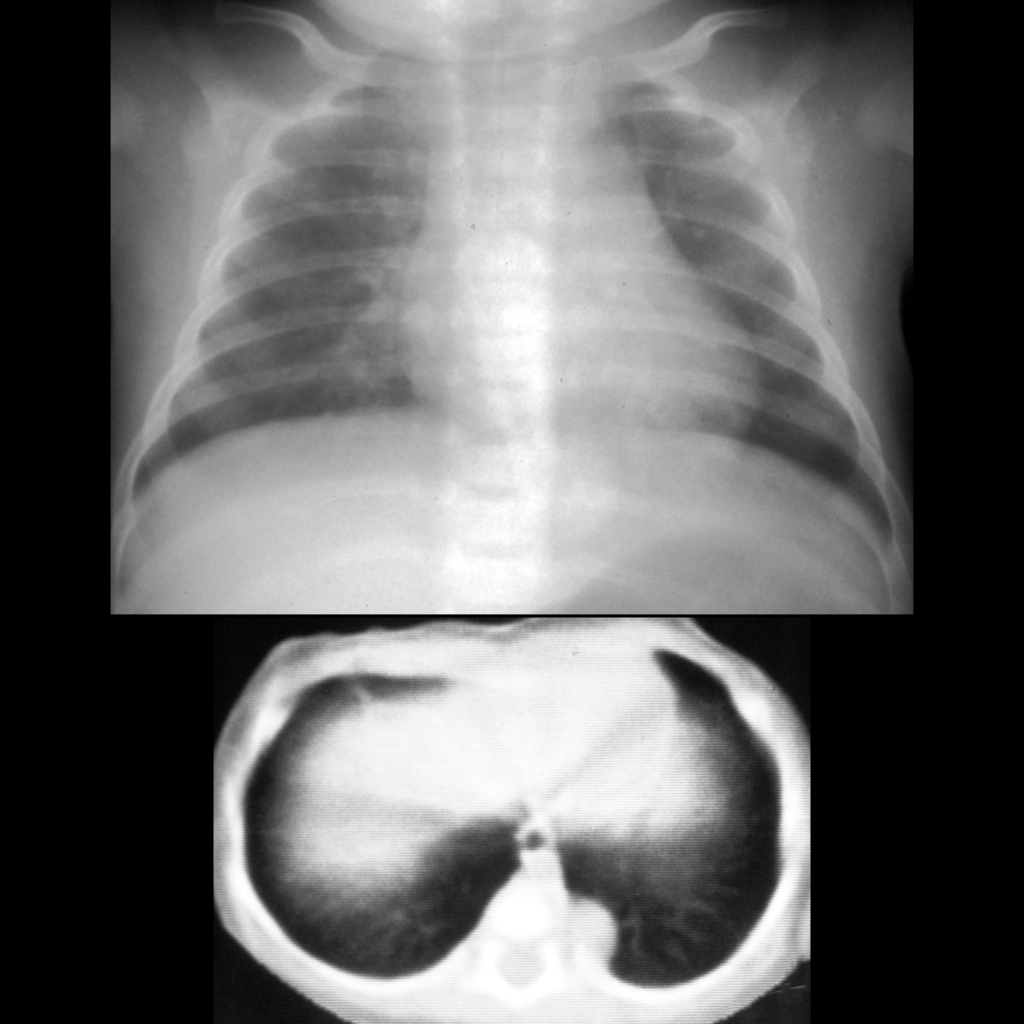- Etiology: nonfunctional dysplastic pulmonary parenchyma lung tissue not connected to bronchial tree or pulmonary artery, comes from accessory lung bud, if it develops early before pleura develops is intralobar, if it develops later after pleura develops is extralobar
- Imaging: most commonly in lower lobes (left > right), arterial blood supply from subdiaphragmatic aorta / celiac trunk / splenic artery, only contain air when infected, 15% are ectopic – suprarenal / mediastinum / pericardial / neck
— Intralobar (75%) – no separate pleural investment (within visceral pleura), pulmonary venous drainage to left atrium (normal drainage)
— Extralobar (25%) – separate pleural investment (outside visceral pleura), systemic venous drainage to vena cava or azygous vein, 15% ectopic – suprarenal / mediastinal / pericardial / neck - Clinical: intralobar present in older child with recurrent lower lobe pneumonias, 60% of extralobar sequestrations are associated with congenital abnormalities (congenital diaphragmatic hernia, cardiac anomalies, congenital pulmonary airway malformation = hybrid lesion)
Radiology Cases of Pulmonary Sequestration
Radiology Cases of Intralobar Pulmonary Sequestration
Radiology Cases of Extralobar Pulmonary Sequestration


Gross Pathology Cases of Pulmonary Sequestration


